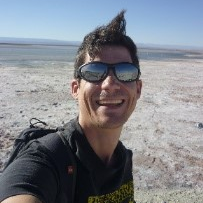Freshwater Community Responses to Stress
A special issue of Water (ISSN 2073-4441). This special issue belongs to the section "Biodiversity and Functionality of Aquatic Ecosystems".
Deadline for manuscript submissions: closed (30 November 2022) | Viewed by 16113
Special Issue Editors
Interests: community ecology; functional ecology; bioassessment; biological traits; multi-stressors; multi-scale approaches; rivers; macroinvertebrates; eDNA
Interests: community ecology; functional ecology; food webs; population dynamics; aquatic and terrestrial macroinvertebrates; fish species; spatial–temporal heterogeneity; stoichiometry; isotopy
Interests: community ecology; quantitative ecology; functional ecology; paleoecology; ecotoxicology; food webs; metabarcoding; spatial–temporal scales; aquatic ecosystems
Special Issue Information
Dear Colleagues,
Freshwater communities are impacted by multiple stressors that can act and interact across multiple spatial and temporal scales. Dissecting the complexity of these stressor–response relationships is of utmost importance in order to implement suitable and sustainable management actions. Although many researchers have sought to find general patterns in these biological responses, increasing evidence indicates that communities significantly differ in the magnitude, rate, and direction of their responses. In this sense, integrating this strong ecological contingency adds further fundamental and applied challenges to address the complexity of stressor(s)–community response(s)–management relationships. This Special Issue aims to present synthetic approaches to tackle this complexity and help decision-makers manage freshwater ecosystems and the ecological services they support. In this framework, we welcome all fundamental and applied studies at the community level, including empirical observations, controlled experiments, taxonomic- (including eDNA approaches), trait-, function-, and/or omics-based approaches, integrated diagnostic tool development, original reviews, and the discussion of opinions.
Prof. Philippe Usseglio-Polatera
Dr. Olivier Dézerald
Dr. Benjamin Alric
Guest Editors
Manuscript Submission Information
Manuscripts should be submitted online at www.mdpi.com by registering and logging in to this website. Once you are registered, click here to go to the submission form. Manuscripts can be submitted until the deadline. All submissions that pass pre-check are peer-reviewed. Accepted papers will be published continuously in the journal (as soon as accepted) and will be listed together on the special issue website. Research articles, review articles as well as short communications are invited. For planned papers, a title and short abstract (about 100 words) can be sent to the Editorial Office for announcement on this website.
Submitted manuscripts should not have been published previously, nor be under consideration for publication elsewhere (except conference proceedings papers). All manuscripts are thoroughly refereed through a single-blind peer-review process. A guide for authors and other relevant information for submission of manuscripts is available on the Instructions for Authors page. Water is an international peer-reviewed open access semimonthly journal published by MDPI.
Please visit the Instructions for Authors page before submitting a manuscript. The Article Processing Charge (APC) for publication in this open access journal is 2600 CHF (Swiss Francs). Submitted papers should be well formatted and use good English. Authors may use MDPI's English editing service prior to publication or during author revisions.
Keywords
- community ecology
- multiple pressures
- pressure interactions
- biotic interactions
- spatial and temporal heterogeneity
- ecological diagnostics
- empirical and experimental approaches
- modeling approaches
- holobiotic and amphibiotic species
Benefits of Publishing in a Special Issue
- Ease of navigation: Grouping papers by topic helps scholars navigate broad scope journals more efficiently.
- Greater discoverability: Special Issues support the reach and impact of scientific research. Articles in Special Issues are more discoverable and cited more frequently.
- Expansion of research network: Special Issues facilitate connections among authors, fostering scientific collaborations.
- External promotion: Articles in Special Issues are often promoted through the journal's social media, increasing their visibility.
- e-Book format: Special Issues with more than 10 articles can be published as dedicated e-books, ensuring wide and rapid dissemination.
Further information on MDPI's Special Issue polices can be found here.







